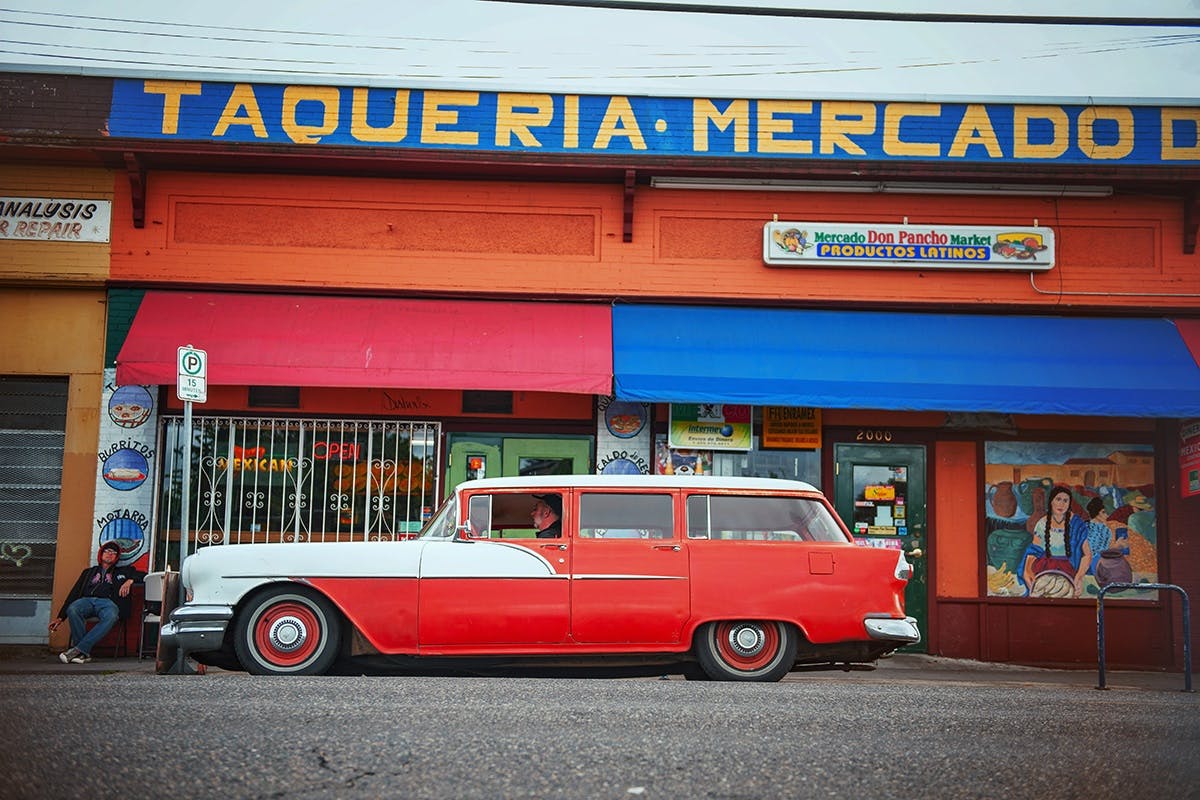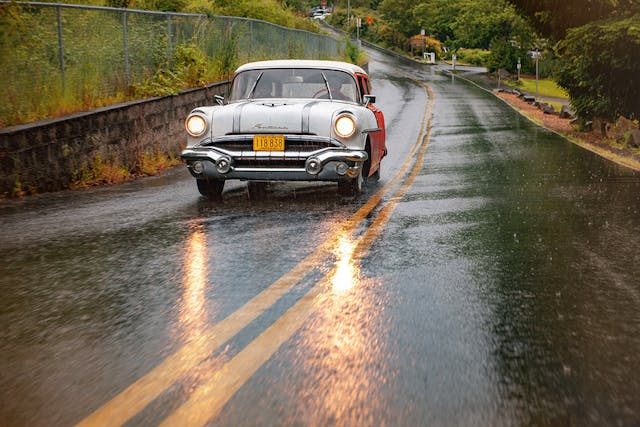With standard V-8 power, a mid-’50s Pontiac is the affordable alternative to its Chevy siblings

By the mid-1950s, performance and dynamic design had become the thing in American cars, and Pontiacs were deemed too conservative. After years of disappointing sales, General Motors considered dissolving the brand into Oldsmobile. Instead, in a stroke of genius, GM president Harlow Curtice appointed 43-year-old Semon E. “Bunkie” Knudsen, the youngest general manager in the corporation’s history. Knudsen would revolutionize Pontiac with power and style, shooting it up the sales charts in just a few years.
Even 65 years later, there’s nothing conservative about mid-’50s Pontiacs—those big, proud, optimistic machines dressed in as much chrome as paint, with elaborate grilles and rocket-inspired taillights. They were exclusively powered by Pontiac’s first V-8, the Strato-Streak. Even the base Chieftain models, the 860 and 870, got the 173-hp overhead-valve 287-cubic-inch mill with a two-barrel carburetor and 7.4:1 compression. Buyers had a choice between GM’s Hydra-Matic and a column-shift three-speed manual. Power steering, power brakes, and air conditioning were options.

The Chieftain got even stronger in 1956. The two-door sedan, four-door sedan, and four-door wagon were joined by a sexy four-door hardtop called the Catalina. Pontiac bored out the engine to 317 cubic inches and bumped the compression ratio up to 7.9:1, increasing output to 205 hp. It improved the Hydra-Matic, now called the Strato-Flight, and beefed up the synchromesh manual. “The added acceleration is felt mostly in the upper speed ranges, or highway speeds,” Motor Trend wrote. But 0–60 performance also improved radically, down from 13.8 seconds to an impressive 11.4. According to MT, “Acceleration is smooth and rapid enough for anyone not bent on qualifying for pole position at Indianapolis.”
New shock valving, steering knuckles, and full-length rear leaf spring retainers improved the Chieftain’s ride and handling. Its styling was revised slightly, too. Chief Pontiac was no longer on the hood, replaced by a jet-inspired ornament, and its grille and front bumper got more angular.
A year later, a major restyle brought larger fins and more confidence. The new space-age “Star Flight” design included a rocket spear running down the side of the car. The grille, though still a huge hunk of chrome, was cleaner, and all Pontiacs lost the phony scoops above their headlights, as well as their traditional Silver Streaks, which ran down the hoods and trunks. Knudsen said the chrome strips looked like an old man’s suspenders and ordered them removed mere weeks before production began.

Knudsen also added more power. The V-8 now had a longer stroke and was up to 347 cubic inches. In the Chieftain, it was pumping out 252 horsepower—still with a two-barrel carburetor, which was more output than Chevy’s 283 with a four-barrel. Triple two-barrel (Tri-Power) setups bumped output to 317 horsepower.
Tri-Five Chevys will always be doo-wop cool, but for a fraction of the cost, a contemporary Pontiac Chieftain will turn just as many heads. Prices have been flat for a decade, and values are far more dependent on body style than anything else, with two-door models and wagons bringing more than the four-door sedans. See you at the hop.
1956 Pontiac Chieftain Wagon
Engine: 317-cid V-8
Power: 205 hp @ 4400 rpm
Torque: 297 lb-ft @ 2400 rpm
Weight: 3800 lb
0–60 mph: 11.4 sec
Price when new: $2648
Hagerty #3-condition value: $16,000–$23,000

